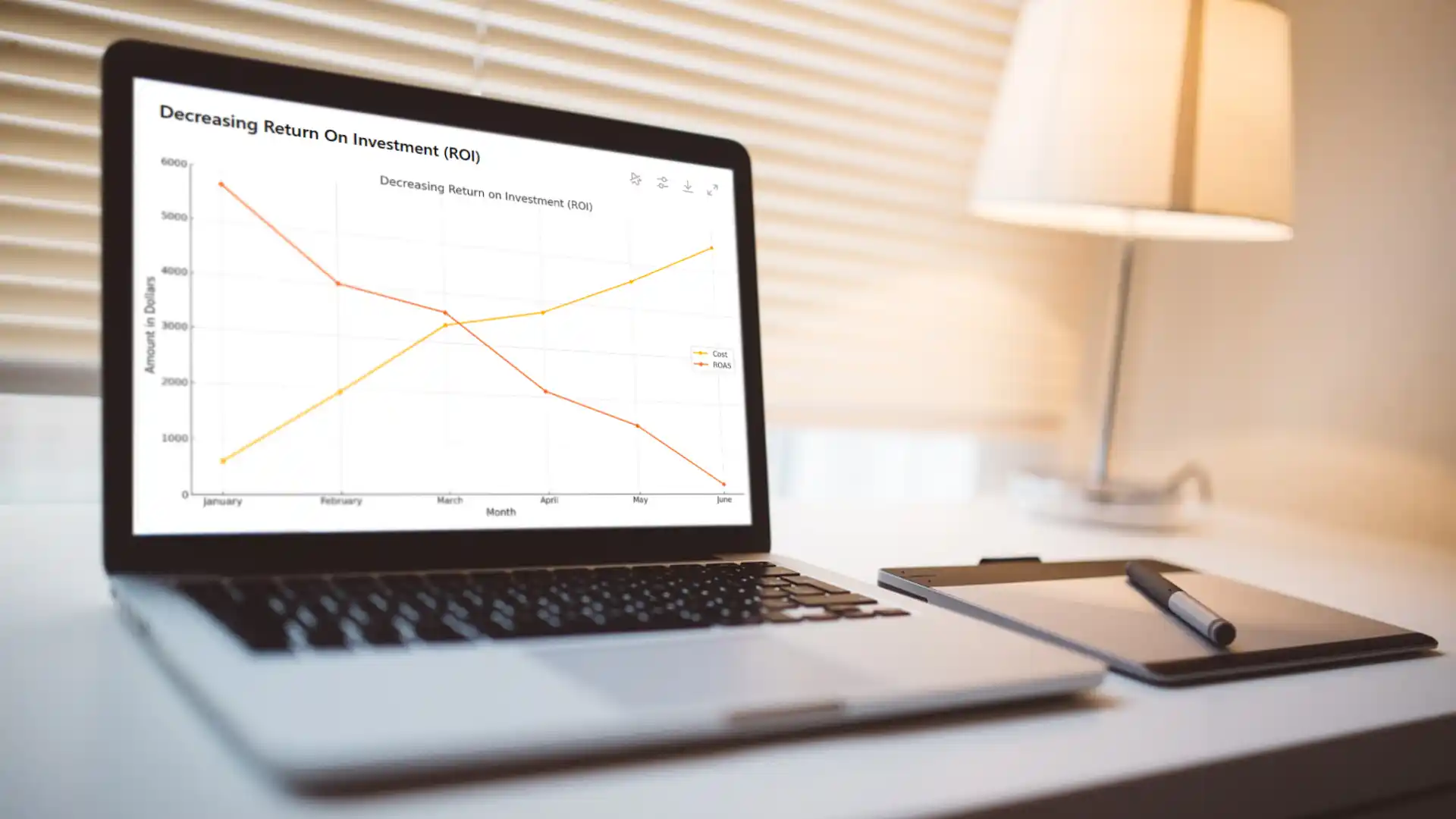
Digital advertising keeps getting pricier, and efficiency is still sliding in 2025
Digital ad spend hit a record $258.6 billion in the US during 2024, up 14.9 % YoY according to the IAB/PwC annual revenue report released this April. (IAB) While dollars keep flowing into the ecosystem, costs are outpacing results:
| Metric | 2022 baseline | 2024 | 2025 YTD | Source |
|---|---|---|---|---|
| Avg. Google Search CPC (all industries) | $3.63 | $4.66 | $5.26 (+12.9 % YoY) | WordStream/LocaliQ 2025 PPC Benchmarks (WordStream) |
| Median CPL across 23 industries | $55.69 | $66.69 | $70.11 (+5.1 % YoY) | WordStream/LocaliQ (WordStream) |
| Aggregate CPC change (agency sample) | – | +31 % (’22→’24) | +45 % (’24→H1’25) | Search Engine Land, July 2025 (Search Engine Land) |
Taken together, most advertisers are paying ~40 % more per click than they did three years ago, while conversion‐rate gains have been modest at best (7.52 % avg. across industries). (WordStream)
Why performance keeps tightening
1. SERP real estate is shrinking
• Zero-click searches now hover around 60 % of all Google queries—up from ~50 % in 2019. (Search Engine Journal)
• AI Overviews (formerly SGE) appear on ~13 % of US desktop queries, removing or pushing paid listings below the fold. Vertical impact is uneven: healthcare SERPs show an Overview half the time, but travel only ~5 %. (Semrush, Search Engine Land)
• Adthena’s 10 M-SERP study found that when an AI Overview is present, the number of above-the-fold text ads drops by 19–26 % depending on the industry, driving up auction prices through supply-and-demand pressure. (Search Engine Land)
2. CPC inflation is real and accelerating
A deep-dive analysis combining Alphabet 10-K filings, WordStream data and long-run agency logs puts CPC inflation at 4 – 12 % annually for most verticals—well ahead of the US CPI. (Search Engine Land)
Some headline examples for 2024 → 2025:
• Search CPC +22 % inside Optmyzr’s Performance Max dataset, even though ROAS was essentially flat. (Search Engine Land)
• LinkedIn CPC +147 % and Meta CPC +64 % across a 22 M-impression client set. (Search Engine Land)
3. AI is changing the auctions – again
• >80 % of Google advertisers now use some form of Smart Bidding, per Google’s own bidding hub. (Google Business) More adoption means bid algorithms chase many of the same “high-value” users, compressing margins.
• Google’s new Smart Bidding Exploration (GML 2025) loosens ROAS targets to scoop up “exploratory” queries—helpful, but it tends to raise average CPC during the learning phase. (Search Engine Land)
• AI-generated ad copy is rolling out of beta with average CTR lifts of 8–15 % in Google internal tests, which further intensifies keyword competition as adopters raise quality scores. (WordStream)
4. Rising quality thresholds
Sites failing Core Web Vitals in 2025 still see ≈ 18 % higher bounce rates and lower conversion propensity, magnifying the cost pain. (Chrome UX Report, Q2 2025). (Search Engine Land)
Benchmarks: How do you stack up now?
B2B snapshot (H1 2025)
| Channel | Median ROAS | YoY change |
|---|---|---|
| Google Search (high-intent B2B keyword sets) | 4.1 : 1 | –9 % |
| LinkedIn Sponsored Content (broad) | 2.2 : 1 | –12 % |
| ABM on LinkedIn (matched lists) | ≈ 3.8 : 1 | – |
| Email (house lists) | 38 : 1 | flat |
B2C snapshot (H1 2025)
| Channel | Median ROAS | YoY change |
|---|---|---|
| Google Shopping | 3.6 : 1 | –6 % |
| Meta (all placements) | 2.5 : 1 | –8 % |
| TikTok (with creator partnerships) | 4.2 : 1 | +2 % |
| Amazon Sponsored Products (established sellers) | 4.0 : 1 | –3 % |
Key takeaway: B2B advertisers remain more resilient (ROAS down roughly 10 %) versus B2C (15–20 % contraction), largely because B2B marketers have leaned harder into first-party data and non-auction channels such as email and webinars.
Action plan for the rest of 2025
1. Re-baseline your math monthly, not annually.
Track CPC, CVR and CPL against both inflation and sector benchmarks so you can see true cost inflation early.
2. Optimize for AI-influenced SERPs.
• Target questions that trigger AI Overviews; earn citations to reclaim visibility.
• Use schema and FAQ blocks to capture People-Also-Ask positions that still send traffic.
3. Master value-based bidding before Google does it for you.
Smart Bidding Exploration rewards advertisers that pass revenue values (or proxy scores) for every conversion.
4. Speed and UX are non-negotiable.
Poor Core Web Vitals will compound already-rising CPCs by hurting Quality Score.
5. Diversify—but with discipline.
• LinkedIn CPCs have spiked, yet matched-list ABM still delivers solid ROAS when combined with sales-accepted goals.
• Retail-media CPCs (Amazon, Walmart) remain below Google Search for many categories; exploit that gap while it lasts.
6. Double-down on owned channels.
With search and social costs rising, the 38 : 1 ROAS you can still get from well-segmented B2B email lists has never looked better.
Bottom line
Google’s auction remains the heartbeat of performance marketing, but 2025 data confirm the cost of that heartbeat is rising faster than inflation—and faster than most marketers’ ability to lift conversion rates. Winning teams will 1) obsess over the math weekly, 2) embrace AI as both a threat and a tool, and 3) invest aggressively in high-margin, owned relationships before the next round of CPC inflation hits.
Prepared July 24 2025




